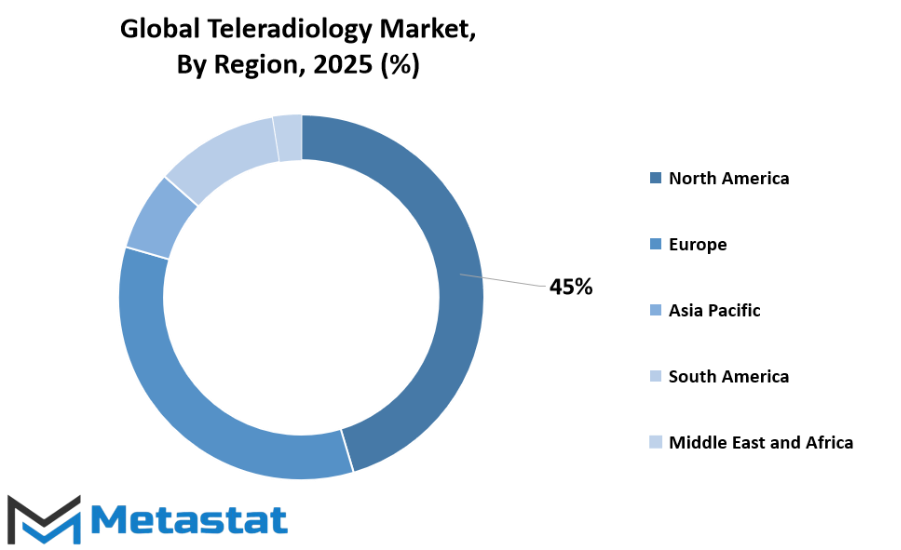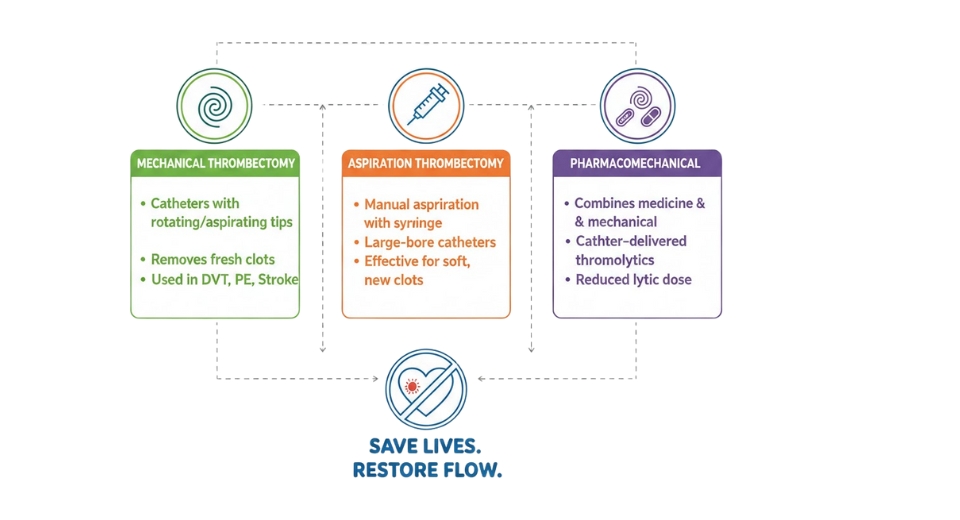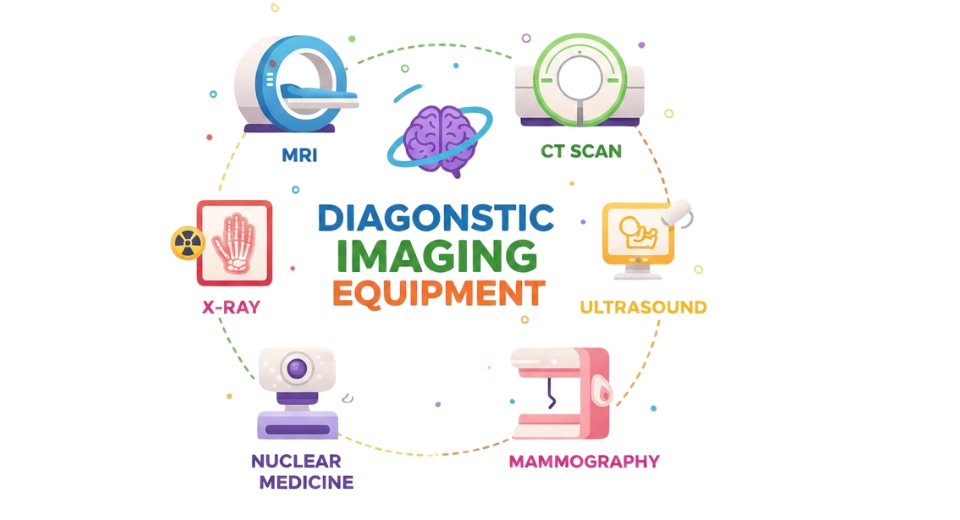MARKET OVERVIEW
The global teleradiology market is a segment of the healthcare industry that involves remote interpretation and tele transmission of radiology images like X-rays, CT scans, MRIs, and ultrasounds, regardless of geographical locations with the help of advanced communication tools. It expands even more with the increasing demands for effective diagnostic services without regional constraints. Teleradiology is required to address the growing requirements arising in relation to availability in healthcare, providing the radiologist with the ability of making a correct and timely diagnosis from wherever he may be. Healthcare facilities and diagnostic centers all over the globe are now adopting this teleradiology solution to deal with the fast-growing demand for specialized medical skills. Adequate technologies are available in the market for teleradiology solutions that provide a guarantee of data transfer and patient confidentiality being adhered to stringently. Powerful software, like AI-based diagnostic software, enhances precision and efficacy in image analysis, rendering the healthcare system reliable and trustworthy.
One of the exquisite features of the global teleradiology marketplace is how it may bridge radiologists with underserved regions, bridging gaps in clinical imaging offerings. Through using secure networks and cloud-based platforms, teleradiology permits healthcare professionals to offer 24/7 diagnostic help, specifically in case of emergencies or in rural areas wherein radiological know-how may not be quite simply available. This function of the market emphasizes how a good deal greater critical it has turn out to be as a way of remaining healthcare gaps and improving patient consequences.
Development of communications technology and imaging modalities will be a part of the evolution in the global teleradiology market. On the faster, even more trustworthy, delivery side, it is all thanks to the advent of the 5G network and additional enhancements in the advanced medical imaging extended to a teleradiology delivery service. Interoperability between such vastly different sets of platforms and devices combined for emerging technologies is anticipated.
The future of the global teleradiology market will be shaped by the regulatory landscape. Greater dependence on cross-border diagnostic services has put adherence to international standards of data security and privacy as a top priority. Players in the market would have to be responsive to these regulations while remaining committed to quality diagnostic services.
Another area of growth within the industry is a rise in joint ventures between technology companies and health care organizations. The partnerships will continue to accelerate innovation as more sophisticated, user-friendly applications of teleradiology are created. Academic and research institutions also will participate in the discovery of new applications of teleradiology, so its expansion would make it a leader in the field of medical imaging.
The global teleradiology market is actually a forces of transformation in the healthcare system, solving two of its biggest dilemmas in its accessibility and expertise issues. Tapped to the best state-of-the-art technology and managed on a global scale, it will redefine once more this system of delivering diagnostic services, and it will establish a more networked but streamlined health care terrain. It will therefore always be capable of modifying for the better in matters of technology, regulatory and social changes and will hence continue being relevant and suitable for the requirements of patients care in coming years.
Global teleradiology market is estimated to reach $14,193.2 Million by 2032; growing at a CAGR of 14.8% from 2025 to 2032.

GROWTH FACTORS
The global teleradiology market is expanding with a fast growth rate due to the fact that health care systems in all parts of the globe are increasingly employing sophisticated technologies to enhance the quality of patient care. Certainly, growing demand for diagnostic imaging offerings is the most powerful driving force on this market. The upward push in scientific situations whose pix at the moment are needed at some stage in the treatment manner, together with cancer, cardiovascular sickness, and neurological disorder, has heightened the demand for well timed and accurate radiology services.
Concurrently, a international shortage of certified radiologists has widened the gap between demand for those services and the healthcare gadget's ability to offer them. Teleradiology has surfaced as a viable solution ultimate this hole by way of allowing a radiologist to interpret and evaluate clinical pictures at distant websites, thereby allowing well timed analysis and remedy. Advances in telecommunications technology also similarly promoted teleradiology adoption. Broadband net and protected information transportation protocols have made on line sharing with experts worldwide in actual time of high-resolution clinical pics feasible.
This implies besides speedy consultations, it improves the quality of care since expert views are available free from geographical limits.
Safety and confidentiality of patient data continue to be a worry for teleradiology to be fully utilized. The systems have to observe very rigorous privacy laws and ensure an environment in which extremely confidential patient data are provided safety. Establishment of teleradiology system and infrastructure needs in addition will pose other issues against its market expansion. Initial setup cost can also be enormous, including purchase of advanced devices, softwares and even the training for operating such machinery. Even smaller health-care centers as well as institutions in developing regions can have their budgets significantly affected by this. Integration of AI in teleradiology seems to be one of the promising new frontiers for innovation in the next decades to come.
AI-powered algorithms enhance accuracy and efficiency for a thorough analysis of images from studies to relieve substantially human error among radiologists. The future of AI is envisioned to be transformed, becoming a core tool in the realm of teleradiology, thereby opening up the doors to quicker, more accurate interpretations, and improved patient outcomes. The global teleradiology market shall certainly witness a monumental increase in the coming years with the ongoing development of technology and the efforts being made in overcoming existing challenges.
MARKET SEGMENTATION
By Service
The global teleradiology market, driven by technological innovation, therefore provides services like the acquisition of remote images, interpretation, storage and archiving of images, reporting, and diagnostic-related consultations. They have been crucial in augmenting access to health care, particularly where specialized services are not available.
Remote imaging services enable health care professionals to send diagnostic pictures to radiologists globally and hence make the possibility of rapid assessment available even where the location is irrelevant. Similarly, image interpretation services have also facilitated easier assessment of medical conditions such that patients are diagnosed and treated in a timely manner. After storage and archiving of images have been helpful in the sense that health facilities keep well-organized, secure, and accessible patient records.
Radiology reporting services enhance delivery of findings to clinicians while diagnostic consultation services provide expert opinions that enhance the credibility of treatment plans. The global teleradiology market will likely become even more central to contemporary healthcare. With the continued advancement in artificial intelligence and machine learning, image analysis is predicted to be faster and even more precise. This will, in turn, be capable of assisting radiologists in handling greater amounts of work, as well as identifying abnormalities that could otherwise have gone undetected. Cloud-based technologies will be used to a much greater degree for storing and archiving images with the ease of access and sharing among the healthcare providers.
The other notable progress in the future will be through the use of advanced communication technologies. The efficiency of high-definition picture transfer via high-speed internet and 5G technology will facilitate fast transfer even from remote or underdeveloped regions. The time for consultation will decrease, enabling faster decision-making, all of which will benefit patients everywhere. Increasing value for healthcare systems worldwide in terms of improved outcomes at reduced costs makes the international market for teleradiology keep expanding. Actually, the promise of filling specialist gaps and making the entire system more effective makes it a key element in the future of medicine. This market will arrive as the harbinger that will assume forms for providing health care in the next ten years with the integration of state-of-the-art technology with a commitment to access.
By Application
It is being spurred mainly by technological innovations and further demand for remote healthcare service provisions based on teleradiology. Since radiologists are able to analyze radiographic images from almost any location, the industry enables quickness and efficiency in the diagnosing role. Applications rise proportionally to new technological innovations and more aspects of the remote image interpretation industries intersecting with various healthcare fields that require diagnostic procedures. Therefore, certain of those applications turn out to be key contributors such that the health care sector would be evolving. The orthopedic radiology segment is the most important segment of the global teleradiology market. The rising number of bone-related disorders and injuries across the globe is driving the demand for orthopedic imaging services. Teleradiology allows orthopedic professionals to quickly see X-rays, MRIs, and CT scans in remote locations as a way of offering immediate treatment recommendations.
This will work in areas where specialized orthopedic treatment is not available except in the same area, so that specific patient will receive the treatment they are looking for irrespective of their physical location within the area. As far as neurology radiology is concerned, teleradiology enhances diagnosis and treatment of neurological illnesses like stroke and brain trauma. It enables the transfer of real-time brain scans; therefore, neurologists make prompt decisions that may be crucial in some emergency cases. The fact that experienced radiologists cannot be found in some geographical areas is thus simplified by teleradiology resulting in rapid response to neurology conditions and, ultimately, better patient outcomes. Cardiovascular radiology is also an ever-changing sector in teleradiology. The imaging diagnostic services over time will contribute to the correct diagnosis of cardiovascular disorders as heart diseases are still the world estimation of cause of death. There are more cardiologists who can evaluate echocardiography remotely with the fast rate at which teleradiology develops and how important it is in saving lives from cardiovascular diseases.
Expectations of this market to develop in the future involve sophisticated tools for speeding up acceleration in diagnosis. Teleradiology provides a solution for chest and pulmonary radiology in diagnosing lung diseases, including pneumonia, tuberculosis, and lung cancer. Remote interpretation of images enables medical professionals to decide more quickly, particularly in emergency situations where time is of the essence. This implies that the capacity to send and receive chest scans efficiently will go on to improve the treatment and care of the patients, primarily those in rural or distant locations. There are other equally significant areas, such as gastroenterology radiology, in which telemedicine radiology may help play a significant role in diagnosing digestive system diseases. Growing gastrointestinal diseases among patients globally need to be diagnosed and treated in good time to prevent delay by a patient for a period of time before being given the diagnosis. The evolution of teleradiology promises much for oncological radiology since the remote availability of images can possibly be superior in facilitating the oncologist in faster and more precise diagnosis and follow-up of cancer. Teleradiology in dental radiology will allow dentists to obtain access and interpret dental images remotely.
Demand for dental imaging and diagnostic procedures will increase, and the teleradiology market will grow globally across all specialties, enhancing health care experience for all patients globally. As we look to the future, the global teleradiology market will only grow larger, driven by further increases in demand for remote health services along with further improvements in the technology of imaging and in communication infrastructure for all the medical specialties. This evolution will continue to improve diagnostic accuracy, speed, and patient care toward better health outcomes globally.
By End-User
The global teleradiology market is constantly evolving, with improvements in technology and the need for accessible healthcare on the rise. The industry makes it possible to transmit radiological images to be interpreted and diagnosed remotely and is going to continue to expand as it will become more accommodating to a modern healthcare system. The industry splits into several segments, which cumulatively dictate the overall progress of it. The end-user sector is extremely responsible for shaping its future. The more the segments via end-users, the market also includes other healthcare facilities such as hospitals, diagnostic centers, ambulatory care centers, radiology clinics, home care environments, and research and academic institutions. They are all significant in increasing the utilization of teleradiology for every setting is where their services are utilized.
Hospitals would remain one of the primary end-users for this international teleradiology market. With the health care delivery system becoming more patient-focused, patients would rely more on quicker and more precise diagnosis available with teleradiology, particularly in medical emergencies. Teleradiology allows radiologists to read images remotely, reducing waiting periods and enhancing the service. Teleradiology-using hospitals also enable distant patients, those who are rural or geographically isolated, access to specialist expertise in centers, and improve the quality of service. The second prominent segment is diagnostic centers, which are slowly embracing teleradiology solutions in order to increase their ability to rapidly and effectively diagnose patients.
As diagnostic imaging usually is a time-sensitive procedure, teleradiology provides a solution to accelerate the results, improving patient care. As diagnostic centers expand coverage to reach more people, teleradiology enables them to treat more people, taking their services beyond location-based areas. Radiology clinics and ambulatory care centers will also witness a massive surge in the global teleradiology market. As more patients like the convenience of outpatient treatments, these clinics will be accruing benefits from having remote access to radiological professionals. The fewer number of patients being hospitalized will also keep the demand going for effective diagnostic services, and therefore, teleradiology is incorporated in their business processes.
Home care environments are a developing area in the market for teleradiology, fueled by the increasing demand for home healthcare. Once patients are recuperating at home, they still need diagnostic services, which teleradiology can offer without requiring them to make repeated visits to hospitals. This trend is expected to persist, particularly with the growth of telemedicine and the movement toward more customized care.
Research and academic institutions have also shown themselves to be a rapidly growing market for teleradiology. As there is more need for inter-border co-ordination, these institutions will employ teleradiology to transfer research as well as diagnostic images, for analysis. Such collaboration will accelerate research in the medical field, thereby promoting international collaboration in the health care industry.
Lastly, the long-term care institutions also will support the growth of the global teleradiology market. With the ever-evolving nature of healthcare, it will look for means to perform diagnostic services remotely through the use of effective methods, with teleradiology being a central part of that approach.
With increased use of remote imaging services by these end-users, the worldwide teleradiology market will continue to expand further in this rapidly changing healthcare landscape. The outlook for teleradiology remains good as regards all healthcare practices, with technology continuing to advance further and greater demands for affordable care.
|
Forecast Period |
2025-2032 |
|
Market Size in 2025 |
$7,046.4 million |
|
Market Size by 2032 |
$14,193.2 Million |
|
Growth Rate from 2025 to 2032 |
14.8% |
|
Base Year |
2024 |
|
Regions Covered |
North America, Europe, Asia-Pacific Green, South America, Middle East & Africa |
REGIONAL ANALYSIS
This fast-emerging global teleradiology market is fueled by the driver of technological advancements and need for healthcare service remotely. The geography of the market is segmented into regions and each of them has a definite role to play in its growth; such regions are North America, Europe, Asia-Pacific, South America, and Middle East & Africa, each one driving growth differently. Knowing the future trends in these countries is insightful about how the market will further develop. The North American market is predominantly characterized by the U.S., Canada, and Mexico.
The U.S. is unique due to its developed healthcare infrastructure, prevalent adoption of digital health technologies, and high teleradiology service demand. The increasing need for healthcare professionals in rural regions is also one of the reasons why the market in the region is growing. As the healthcare sector is becoming more telemedicine-dependent, teleradiology is likely to be the key to filling medical imaging care gaps and making healthcare more accessible. Canada and Mexico also hold promise of good growth since their health systems are increasingly embracing digital solutions to enhance diagnostic services. Europe follows closely, with the UK, Germany, France, and Italy paving the way. The continent is growing at high levels due to its advanced healthcare systems and the efforts of the government to enhance the delivery of healthcare.
Especially, the UK and Germany are making significant investments in digital health infrastructure, which supports the uptake of teleradiology services. As clinics and hospitals get more integrated in their models of care, the uptake of teleradiology services will increase significantly in Europe. India, China, Japan, and South Korea are emerging as key players in the teleradiology market in the Asia-Pacific region. Increased urbanization, technology, and an increasing need for quality healthcare are the major drivers for the growth of the market. India and China with their huge population base can be expected to witness a major take-up of the services of teleradiology to cater to the emerging demand for healthcare specialists.
Japan and South Korea will remain front-runners in the uptake of cutting-edge technology for facilitating distant diagnostics and access to healthcare. South America, particularly Brazil and Argentina, will also play a part in the growth of the market. Greater investment in digital health infrastructure has been witnessed in the region and teleradiology being more and more adopted in accomplishing an increase towards improved access to health care by remote locations. The Middle East & Africawhich are nations like the GCC states, Egypt and South Africa-is gradually entering the phase of accepting teleradiology too. Once the health systems of the regions keep on evolving, opportunities for off-site radiological services should be high enough for all other market players as well.
The Middle East, where heavy investments have been made in healthcare, should develop in the teleradiology market consistently. As healthcare keeps on transforming all across the globe, every region will have a special contribution in making the future of the teleradiology market more promising. The increasing use of digital health technologies and greater demand for affordable healthcare will propel this market in each of the regions.

COMPETITIVE PLAYERS
The global teleradiology market is changing dramatically as technology growth and increasing healthcare requirements are reshaping its scenario. Teleradiology can be described as the process of transferring radiological images from one location to another for analysis and diagnosis. The healthcare industry is catering to this increasing demand for off-site services, and teleradiology service markets are flourishing. One of the principal causes of this boom is a growing demand for quick, effective diagnosis solutions in the majority of regions lacking a hard core of radiologists. The future of this business will be contingent on the strategic and technology innovations brought to the industry by top leaders. There are already companies making names in this undertaking, e.g., by providing advanced teleradiology services like Vee Technologies, Teleradiology Solutions, 4Ways Healthcare.
These firms are important in bringing more access to radiology services, particularly to underserved populations, by making diagnostics timely and accurate. The capacity to offer remote services is transforming the way healthcare facilities work, offering them a chance to beat staffing shortages and thus enhance patient care. These players are always advancing their offerings, trying to be at the top of the game when it comes to embracing new and creating technologies, including artificial intelligence and machine learning, that can enhance image analysis and diagnostics. Other notable players in the global teleradiology market, such as TeleDiagnostic Solutions, USARAD Holdings Inc, and Everlight Radiology, are also contributing to the rapid growth of the market. Their strategic focus on offering high-quality, 24/7 teleradiology services ensures that healthcare providers can access expert radiologists at any time. This accessibility and speed in delivering diagnostic reports are pivotal to improving patient outcomes, particularly in emergency care situations where time is critical.
With the expanding market, Mednax, US Radiology Specialists, Inc, and StatRad are likely to expand their operations through acquisition and affiliation, thereby developing more market power and chances to provide full teleradiology services across a large number of areas. Through the provision of their experience and capabilities, they will remain competitive in business as the healthcare system globally will become more essential when it gets upgraded.
In the coming times, these companies will spearhead innovation in the global teleradiology market. Radisphere, Krsnaa Diagnostics Ltd., Teleradio, Imaging Technology Group, NightHawk Radiology, and Future Teleradiology are committed to integrating superior technologies like cloud-based systems and AI-based diagnostic tools, which is going to further boost accuracy and efficiency of teleradiology services.
These developments will be instrumental in further opening the market to healthcare professionals and patients across the globe. The global teleradiology market future will be influenced by the ongoing developments of these competitive players, ensuring the industry stays at the helm of healthcare provision.
Teleradiology Market Key Segments:
By Service
- Remote Imaging Services
- Image Interpretation Services
- Image Storage and Archiving Services
- Radiology Reporting Services
- Diagnostic Consultation Services
By Application
- Orthopedic Radiology
- Neurology Radiology
- Cardiovascular Radiology
- Chest and Pulmonary Radiology
- Gastroenterology Radiology
- Oncology Radiology
- Dental Radiology
- Other Specialties
By End-User
- Hospitals
- Diagnostic Centers
- Ambulatory Care Centers
- Radiology Clinics
- Home Care Settings
- Research & Academic Institutes
- Other Healthcare Facilities
Key Global Teleradiology Industry Players
- Vee Technologies
- Teleradiology Solutions
- 4Ways Healthcare
- TeleDiagnostic Solutions
- USARAD Holdings Inc
- Everlight Radiology
- Mednax
- US Radiology Specialists, Inc
- StatRad
- Radisphere
- Krsnaa Diagnostics Ltd.
- Teleradio
- Imaging Technology Group
- NightHawk Radiology
- Future Teleradiology
WHAT REPORT PROVIDES
- Full in-depth analysis of the parent Industry
- Important changes in market and its dynamics
- Segmentation details of the market
- Former, on-going, and projected market analysis in terms of volume and value
- Assessment of niche industry developments
- Market share analysis
- Key strategies of major players
- Emerging segments and regional growth potential








 US: +1 3023308252
US: +1 3023308252






